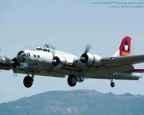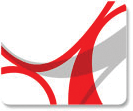Comer Rothrock was one of the most interesting friends
that I have known. Even before I learned about his pilot successes
in WWII. No matter what he undertook, when he accepted a task you
knew he would do it as well as anyone could. He was an excellent patient.
He had a bad heart and early on in the beginning of surgery for that
disease he wanted to try anything. He was successful until he ran
out of veins and then somehow he got sent to Bethesda and there they
took out a vein from his arm and again it worked well. He had a great
lady for a wife — Dianne — and as far as I know she is still
on this earth. He enjoyed making flying airplane models and would
go to meets all over and had one of the most successful models. Both
he and his wife were strong Christians and participated actively in
their church. We never socialized but he was one of those patients
when I saw his name as one of the patients for the day, I knew it
would be a god one. It was a compliment to me that he would give me
a copy of his successes. He was proud of his activities in the Air
Force and felt that he had been left behind when his feat was not
officially noticed. He would have been delighted by any notoriety.
Thanks for offering me the opportunity to participate.
Henry M. Yonge M.D.
Edited for length. The full text with authentication letters can be found at the end in Adobe Acrobat format. "there it is!"
broke into the clear at 500 ft. I climbed to 800 -
1,000 ft. and set up the autopilot. When I crossed the localizer beam
I set the unit on outbound. After sufficient time I switched the setting
to inbound, dropped the gear, set 1/3 flaps, adjusted R.P.M. and power
setting and readjusted the autopilot. When the glide path beam centered
I switched to final approach and manually operated the throttles to
maintain proper air speed. When we entered the soup the flight engineer,
standing by my seat, called out the air speed and altitude (radio
altimeter) at frequent intervals. When the altitude got below 100
ft his voice became very tense and just before the wheels hit we could
see the pavement below us and everyone shouted "there it is!"
no time to be reminiscing but flash-backs are instantaneous.
In other words, my life flashed before my eyes. What's the motivation
behind this test pilot attempting such a feat with untried, primitive
equipment, no redundancy, no radar surveillance, and with no thought
of financial remuneration? Maybe by telling you this many many years
later, I can begin to understand it myself.
When I finished basic flying school, I was told I was too big for fighters (which I wanted) and went to twin engine advanced training. I then had the choice of Air Transport Command or B-17 combat training and I chose the B-17. Upon completion of B-17 transition they selected six of the class to go to Army Air Forces School of Applied Tactics in Orlando, Florida, where I was assigned to the 1st Bomb Sq. 9th Bomb Group under the command of Col. James T. Connally (Group C.O.) and my Sq. C.O. was later to be Col. Earl Tash. These two men are mentioned on Page 59 in the book titled "Flying Fortress" by Edward Jablonski. There at Brooksville, FL, we tested glide bombs which were made of wood and carried under the wing of the B-17. We carried Hollywood's Hal Roach (produced "Our Gang" movies) in the back seat of a Douglas Dauntless dive bomber to film their descent. There we also tested the electronic turbo-supercharger regulator, German radar equipment with searchlights and in the mountains. Because of my Piper Cub experience in the mountains, I got the job of flying in the mountain valleys. We tested radio control bombs, radio control bomb releases, incendiary bombs. formation designs (for head-on attacks) and everything that came down the pike. When the first B-29's were ready, the squadron moved out. Ralph Taylor, (engineering officer) flew the weather B-29 and selected the target for Paul Tibbits to drop the "A" bomb. Tom Classen (operations officer) was Tibbits' executive officer in charge of training for the bomb drop. I was sent to Pinecastle A.F.B., FL. I asked the executive officer (Hugh Shelton) to request my transfer when they got the B-29s which he did, but the request was turned down and I was locked in test work. By now, A.F.S.A.T. had been changed io the Army Air Forces Tactical Air Center and our test work was under the control of the Air Forces Board. We continued testing Azon Bombs, Razon Bombs, Heat Seeking Bombs, the use of Christmas tree tinsel for radar jamming, Formation Design, etc. Three of us went to Eglin Field to be checked out in a B-29 that was to be used in test work for the delivery of the A-Bomb. When we brought it back to Pinecastle instead of parking it on our ramp, we were told to park on the other side of the field on the B-24 ramp. I never flew that plane again as Col. Tibbits came there and took over that test program. There I did stall tests for the Boeing Co. on three different manufacturer's B-17Gs.
the Air Forces Board. My first problem was the SCS-51
localizer beam which was so crooked no airplane could follow it. The
two engineers who worked with me (the names Logan & Setzer
stick in my mind) put up shielding antennas and got the beam straightened
out. They had installed a black box in a B- 17G with a three position
switch (outbound, inbound and final approach) to couple the localizer
beam and glide path with the automatic pilot. They also installed
an experimental radio altimeter that worked without any lag. Bob Barry
was my co-pilot during most of the test work when I was using blue
goggles and amber glass in the windows to block my vision but not
his. While working on this project a major from Italy was sent to
Pinerastle A_F.B. with his radar truck. He conceived the idea of G.C.A.
(Ground Controlled Approach) while following a B-24 that crashed into
a mountain in bad weather. He made up a plastic grid with circles
on a radar scope. I was his guinea pig and he would tell me the corrections
to make (right or left) and the altitude I should be at as I crossed
the circles. he was new at the game and got his corrections mixed
up quite often so I never tried approaches under actual instrument
condition with him.
enough blind approaches to satisfy myself that the
system was trustworthy. Near the end of 1944 1 reported to Col.
Tash that we had gone as far as we could go with the system and
that it was working well. he said, "You ]mow what the proof of
the pudding is. don't you?" He told me that he would not order
me to test the equipment under actual instrument conditions but that
if I had enough confidence in myself and in the equipment he would
authorize the tests and take the responsibility for any problems.
I told him that when the weather was right I would do it.
Some time later we had a dense fog blanket 500 feet thick with zero-zero conditions. I was assigned a first pilot to be my copilot. Bob Barry did not get to fly on the final test I think the copilots name was Tom O'Connell but I am not certain. "there it is!" (continued)
told hum that I had gotten the proof of the pudding
by making two zero-zero landings. A visiting Col. was sitting in the
room and he jumped up and said, "I don't believe it, no one has
ever made a zero-zoo landing." 1 told him I did not know about
that but he could call the control tower to verify what I said. Col.
Tash then introduced me to Col. Joe Duckworth who was in
charge of the Bryan Instrument School in Texas.
After reporting to Col. Tash I heard through
the grape vine that I was going to Fort Worth to run some acceptance
tests (maximum load, etc-) on the B-32 which was similar in size to
the B-29. At that time Gen. Eisenhower put out an order that
all who had not been overseas would go immediately, so they had to
release me for transfer to an overseas replacement depot and I was
on board a troop ship in mid Atlantic when President Roosevelt
died. I was assigned to the 452nd B.G., 8th AF and after the war 1
flew a B-17G back from England to the States and was discharged in
November, 1945. In 1983 1 went to Alaska on Wien Airline and saw an article in their July/August issue of "Flight Time" describing the new Boeing museum and the "Red Barn." This stirred up old memories so I wrote the Museum of Flight to see if they had any records of the zero-zero landings. They did not. Wright Field had no file on the All Weather Project either. In 1985 I went back to England with members of the 452nd B.G. Association for the 40th anniversary of VE Day. When talking to some of the pilots about the zero-zero landings they encouraged me to get them on record as a milestone in aviation history. In December of 1985 the Air Force Magazine published my letter requesting names and information. The response gave me contacts and information. I learned that after my departure the project had been moved (March 6, 1946) to Clinton County Airbase in Wilmington, Ohio which became The All Weather Flying Center, and the staff had been increased from a project officer and two civilian engineers to an entire division, which included civilian scientists. One of my contacts provided me with information on the test work there and found that several yeas elapsed before anyone else made a zero-cm Lending. I was able to obtain sworn statements from the Test and Development Officer and his Administration Officer, the Squadron C.0. and the co-pilot (who flew with me on most of the tests) that verified I had made the zero-zero landings. I am greaty indebted to Dr. William Elliott.
Department of the Air Force. AFC/HO, Wright Patterson AFB. who gave
me encouragement and assisted me in obtaining information. Through
our efforts he now has a very good historical file on the All Weather
Projects that containing names and event that now fill a blank space
in aviation history Coman Wendell Rothrock, Jr.
Original
Document by Coman Wendell Rothrock, Jr.
|
|
Visitors since
June 6, 2000 |




